on photography...
Andrea
I get lots of comments, compliments and questions about my food photography. To this I say, THANK YOU! Photography is a passion of mine and there is nothing more flattering than having others notice your passion and comment positively about it.
My interest in photography began when I was a little girl. I grew up with a father who was an amateur photographer and always had a camera in his hand. We even had a dark room in our house. I got my first camera when I was 10-ish, and was always the girl documenting all events with my friends in middle school and high school. I took a class to learn more about manual photography and developing and even started a photography business with a good friend our senior year.
I rebelled against digital cameras for years, still prefering to take all of my social photos and architecture model shots with my Minolta SLR camera. I finally gave in and my father gave me my first digital camera my second year of college, a Kodak 3 mega-pixel point-and-shoot. It was used for my social shots out with friends, but for my detailed architecture photos nothing beat the SLR...I was still hooked on film.
The digital SLR has come a long way since then, and I am now lucky enough to own a Canon EOS 5D. It has completely sold me on digital, although I still dream about picking up a vintage Polaroid camera sometime, just for fun. I have several lenses for the DSLR, but for my food shots I typically use a Sigma 35-70mm. We also have a Canon Digital Elph SD850 that I use when I am away from the house. It takes great shots and is much more portable than the DSLR.
I've compiled a few tips that I keep in mind when photographing food for the blog. But to start, I AM NOT AN EXPERT! I simply have a love for photography and several years of practice. There are many other sites out there that could give much more technical how-to's than I ever could, and I recommend that you do some research if you are truly passionate about learning more. A couple of sites that I've enjoyed looking at:

practice practice practice!
I know you've probably heard it 1000 times, but that is truly how I learned about light and composition. You have to experiment with different settings on your camera and different lighting configurations in your home to figure out what works best for you. Photography educators recommend keeping a journal, although with the digital age I don't know if its necessary anymore since most cameras store information about camera settings used for particular shots. But if you're like me and learn through recordation, start a journal. Try different settings and record each small change you make, noting which pictures use which settings. There are no excuses to not practice and experiment now that everybody has digital cameras...there's no waste!

composition.
I'm very careful with setting up my photos when I take them. I probably take 20 different photos for every 1 that turns out how I want it. I try to keep the background simple, focusing on the food and keeping clutter out of the shot. Try lots of different angles to get the perfect one that will showcase exactly what you want to show.

Whole-dish shots aren't always necessary. Sometimes a picture of just a portion of the dish is enough.
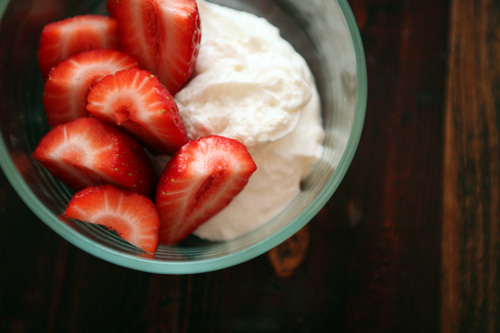
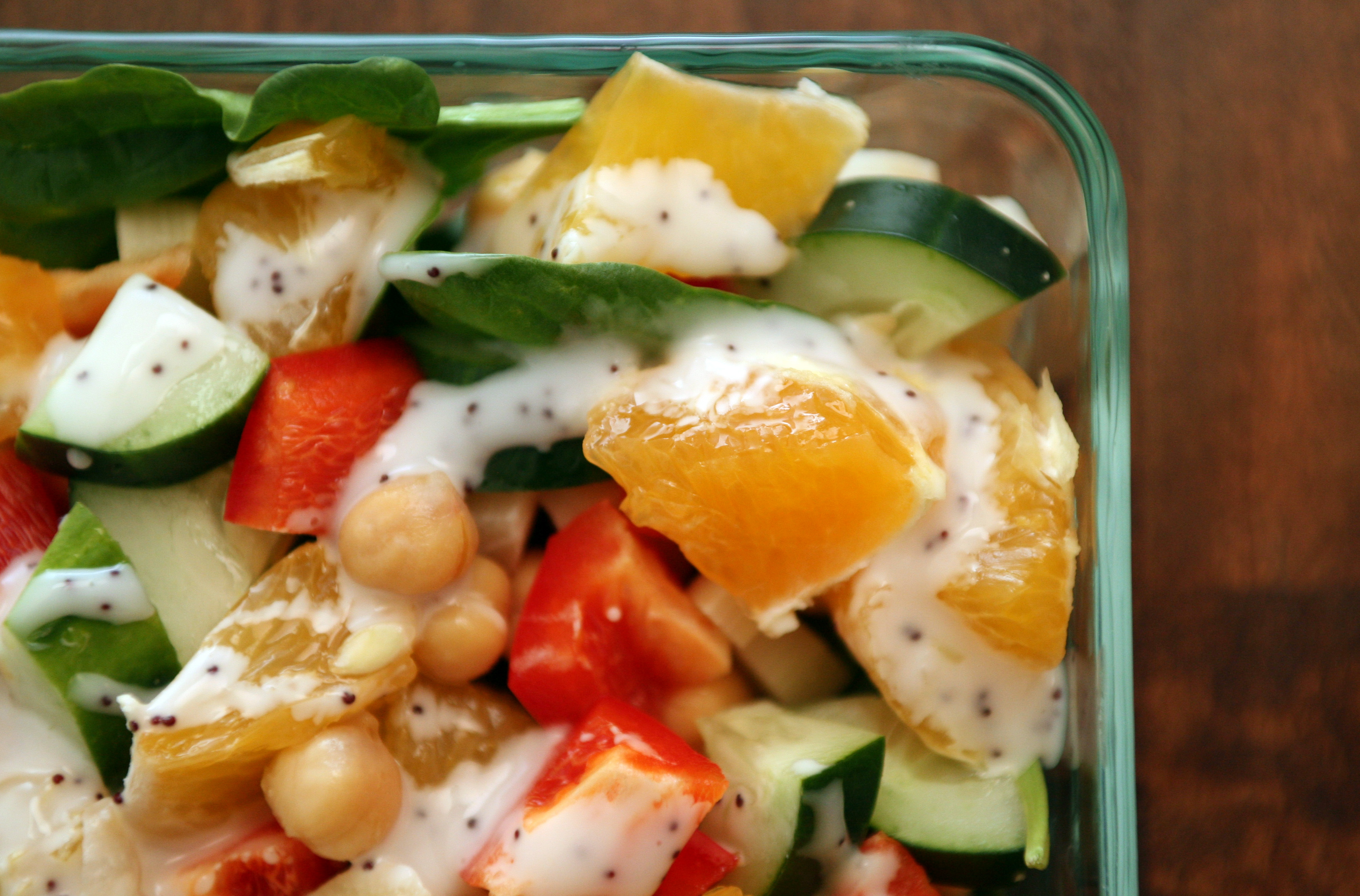
Color and texture are important. Boring-looking food will mean boring photographs. A sprig of fennel or parsley, a dash of ground pepper or a drizzle of dressing can take a photo a long way.
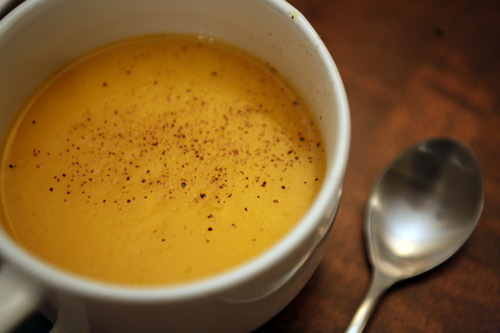

Prep shots are fun too, and help to bring some variety to the blog.
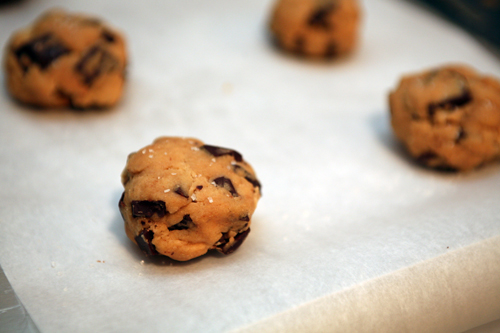

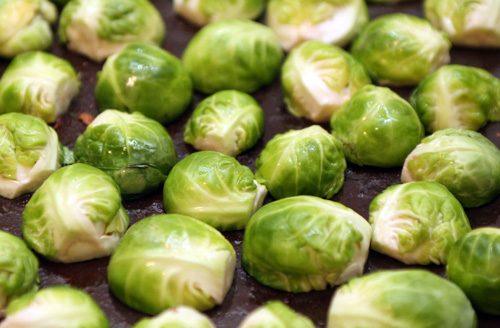
light.
Daylight is always best. I love the weekends when I can take my photos during the day. During the week I have to take a lot of my shots in the dark and I have some pretty sophisticated equipment that helps me out. For a point-and-shoot camera, (which are great! I have one that I use often) the best bet is to keep the flash off because you don't have much control over it. Bring in lamps that you can use over your food. You want to try and light the food evenly so you don't get any major shadows (which will happen with the flash from a point-and-shoot). If you want to experiment with the flash on your camera, try putting a piece of white posterboard on the opposite side of your camera and flash, to help bounce light back onto the opposite side of your food. This should help with the harsh shadows.
This shot was taken with just the daylight from my window.
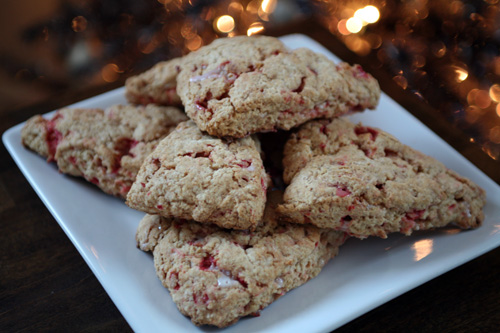
The night before I took this shot with just the light from my dining room lamp...not pretty.

Now I have an external hot shoe flash for my DSLR camera that is directional, meaning that I can point it away from the subject of my photographs and bounce light off of the ceiling or a wall for better lighting. It makes evening shots much easier for me...

photoshop.
I try to use Photoshop as little as possible, but I do use it. My camera takes huge photos, so I have to reduce every one that I take. I also will "auto level" the shots not taken in daylight or when I'm not happy with the general color. This usually helps, but can't completely make up for not having the right lighting when you actually take the picture. I always try to compose my pictures when I take them so that I don't have to crop them in photoshop when I'm done. The less time I have to spend on each shot the better.
Here is an example of a shot before and after "auto-leveling" in Photoshop.


inspiration.
Look at other great photographers and practice trying to emulate the things they do. Don't copy their backdrops, props or styles, but you can learn a lot from looking at the different angles and compositions of other artists' photographs. Check out some of the "visual inspiration" blogs and websites listed on my blog. Some of the mouth-watering food photography that I aspire to?
I hope this was helpful! Feedback is always welcome...if you have any tips that you would like to mention, please comment!
My interest in photography began when I was a little girl. I grew up with a father who was an amateur photographer and always had a camera in his hand. We even had a dark room in our house. I got my first camera when I was 10-ish, and was always the girl documenting all events with my friends in middle school and high school. I took a class to learn more about manual photography and developing and even started a photography business with a good friend our senior year.
I rebelled against digital cameras for years, still prefering to take all of my social photos and architecture model shots with my Minolta SLR camera. I finally gave in and my father gave me my first digital camera my second year of college, a Kodak 3 mega-pixel point-and-shoot. It was used for my social shots out with friends, but for my detailed architecture photos nothing beat the SLR...I was still hooked on film.
The digital SLR has come a long way since then, and I am now lucky enough to own a Canon EOS 5D. It has completely sold me on digital, although I still dream about picking up a vintage Polaroid camera sometime, just for fun. I have several lenses for the DSLR, but for my food shots I typically use a Sigma 35-70mm. We also have a Canon Digital Elph SD850 that I use when I am away from the house. It takes great shots and is much more portable than the DSLR.
I've compiled a few tips that I keep in mind when photographing food for the blog. But to start, I AM NOT AN EXPERT! I simply have a love for photography and several years of practice. There are many other sites out there that could give much more technical how-to's than I ever could, and I recommend that you do some research if you are truly passionate about learning more. A couple of sites that I've enjoyed looking at:

practice practice practice!
I know you've probably heard it 1000 times, but that is truly how I learned about light and composition. You have to experiment with different settings on your camera and different lighting configurations in your home to figure out what works best for you. Photography educators recommend keeping a journal, although with the digital age I don't know if its necessary anymore since most cameras store information about camera settings used for particular shots. But if you're like me and learn through recordation, start a journal. Try different settings and record each small change you make, noting which pictures use which settings. There are no excuses to not practice and experiment now that everybody has digital cameras...there's no waste!

composition.
I'm very careful with setting up my photos when I take them. I probably take 20 different photos for every 1 that turns out how I want it. I try to keep the background simple, focusing on the food and keeping clutter out of the shot. Try lots of different angles to get the perfect one that will showcase exactly what you want to show.

Whole-dish shots aren't always necessary. Sometimes a picture of just a portion of the dish is enough.


Color and texture are important. Boring-looking food will mean boring photographs. A sprig of fennel or parsley, a dash of ground pepper or a drizzle of dressing can take a photo a long way.


Prep shots are fun too, and help to bring some variety to the blog.



light.
Daylight is always best. I love the weekends when I can take my photos during the day. During the week I have to take a lot of my shots in the dark and I have some pretty sophisticated equipment that helps me out. For a point-and-shoot camera, (which are great! I have one that I use often) the best bet is to keep the flash off because you don't have much control over it. Bring in lamps that you can use over your food. You want to try and light the food evenly so you don't get any major shadows (which will happen with the flash from a point-and-shoot). If you want to experiment with the flash on your camera, try putting a piece of white posterboard on the opposite side of your camera and flash, to help bounce light back onto the opposite side of your food. This should help with the harsh shadows.
This shot was taken with just the daylight from my window.

The night before I took this shot with just the light from my dining room lamp...not pretty.

Now I have an external hot shoe flash for my DSLR camera that is directional, meaning that I can point it away from the subject of my photographs and bounce light off of the ceiling or a wall for better lighting. It makes evening shots much easier for me...

photoshop.
I try to use Photoshop as little as possible, but I do use it. My camera takes huge photos, so I have to reduce every one that I take. I also will "auto level" the shots not taken in daylight or when I'm not happy with the general color. This usually helps, but can't completely make up for not having the right lighting when you actually take the picture. I always try to compose my pictures when I take them so that I don't have to crop them in photoshop when I'm done. The less time I have to spend on each shot the better.
Here is an example of a shot before and after "auto-leveling" in Photoshop.


inspiration.
Look at other great photographers and practice trying to emulate the things they do. Don't copy their backdrops, props or styles, but you can learn a lot from looking at the different angles and compositions of other artists' photographs. Check out some of the "visual inspiration" blogs and websites listed on my blog. Some of the mouth-watering food photography that I aspire to?
I hope this was helpful! Feedback is always welcome...if you have any tips that you would like to mention, please comment!